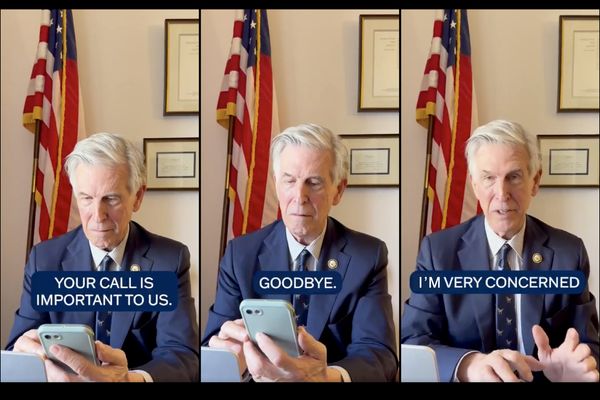Shopping with plastic is pricier than ever — interest rates on credit cards are hitting fresh record highs. And the timing couldn't be worse.
Now's the time many shoppers start pulling out their credit cards. Black Friday and the kickoff to the holiday shopping season is just weeks away.
Let's get the bad news out of the way first. The national average annual percentage rate (APR) on all credit cards is a record 20.72%, says Bankrate.com.
Store-branded cards with a retailer's name on them charge even higher rates. The average rate on these retail credit cards recently hit a record high of 28.93%. Many store-only cards, which can only be used at a single store, topped the 30% barrier.
"Rates are the highest we've ever seen since we started tracking in the mid-1980s," said Ted Rossman, senior industry analyst at Bankrate. And if Wall Street is right and the Fed keeps rates higher for longer, credit cards rates will remain elevated for a while as well.
The Problem With Higher Rates
That's an issue for those who carry a balance. It means they're being hit with high rates typically reserved for deep subprime borrowers, or those with credit scores of 580 or lower, adds Rossman. Nearly half (47%) of cardholders carry a balance month to month, up from 39% two years ago, according to Bankrate.
With borrowing rates at peaks never seen before, Rossman sees trouble on three fronts for users of credit cards. The problems especially hit those who carry a balance or get snared in credit card offers that end up hitting them with deferred interest.
Three Problems For Credit Card Borrowers
First, people are carrying more debt for longer periods of time. Six of 10 cardholders who carry a balance have been in credit card debt for at least a year, up from just 50% two years ago, according to Bankrate. So, for those already carrying balances on their cards, interest costs will rise even higher.
Next, total credit card debt is on the rise. It topped $1 trillion for the first time in the second quarter of 2023, according to the Federal Reserve. The average debt per borrower was $5,947, up 13% from the same period in 2022. That's 23% higher than the second quarter of 2021 when Americans were flush with Covid-19 stimulus cash, says second-quarter 2023 data from credit reporting agency TransUnion.
More recently, as stimulus money was spent down, "it's been pretty much a straight-line upward jump in balances," said Rossman.
And lastly, inflation is forcing people to pay more for things they buy. That is giving many people a cash-flow crunch that forces them to use credit cards to pay for daily essentials. All this amps up the debt-servicing burden if balances aren't paid in full each month.
"Oftentimes, it's buying something very practical that gets people into credit card debt," said Rossman. "When you think about more debt, higher rates, higher prices, it all kind of feeds off itself."
What's spiking the hike in costs of using plastic is the 11 interest rate hikes from the Federal Reserve since March 2022 in its fight against sky-high inflation.
So, what's a credit card user to do to avoid getting blindsided by high rates and going into debt?
Pay Off Your Bill In Full Each Month
"The best strategy with any card is to try to pay off the balance as quickly as possible," said Cassandra Happe, analyst at WalletHub. If at all possible, pay off the balance in full each month and on time to avoid any interest charge or late penalty.
And since retail credit cards and store-branded cards typically charge the highest rates, steer clear of these cards if you can't pay the balance in full each month, adds Rossman. That's especially true during the holiday shopping season.
Retailers' new card offers often come at the time of checkout with the lure of a discount of 20% or 30% for the purchase. "Don't fall for the 30%-off pitch," said Rossman. "If you're planning on carrying a balance, it's probably not the best product for you," he said.
Skip Minimum Payments
Making minimum payments is also a no-no.
Here's why: If you finance a $1,000 purchase at the average retail-card interest rate of 28.93% and only make minimum payments, you'll be in debt for 50 months — or more than four years. Ultimately, you'll owe $715 in interest, says Rossman.
On the flip side, if you're saving a bundle by getting a big purchase such as an appliance on sale, and you can pay it off before the introductory-offer clock runs out, go for it, says Rossman.
Take Advantage Of 0% Offers
If you get an offer for a no-interest card or 0% balance transfer for a set period, usually 12 to 18 months, take advantage of it.
"That's my top tip for anyone wrestling with credit card debt," said Rossman. The interest savings can be substantial. On an average balance of $5,947, you can save $1,232 in interest in a year based on the average card rate of 20.72% rate. You can also avoid $1,720 in interest charges on the average retail credit card rate of 28.93%.
But there's a caveat: "Make sure you really understand the terms of the agreement," said Happe.
The fine print will let you know that if you don't pay the balance in full by the end of the promotion period, you will be hit with deferred interest on the total balance.
"Make sure if you're not able to able to pay the balance off right away that you have a plan in place to get it paid off before the introductory period ends," said Happe.
Know Your Real Credit Cost
Don't think earning 5%-plus on savings will offset higher rates. Sure, you're finally earning some real money in your money market account or CD. And, no doubt, that cash cushion makes paying the bills easier.
But the reality is the math still doesn't add up in your favor.
"The rate on your savings is not going to offset what you're paying on the flip side with your credit card," said Happe.
That said, if you do have ample savings now, use it to pay off your credit card bills to avoid hefty interest payments, Rossman adds.
Utilize 'Island Approach' Strategy
If you have multiple credit cards with different interest rates and rewards features, you may have some options to help offset higher interest rates, says Happe. The so-called island approach is when "you use specific types of credit cards for certain types of purchases," said Happe. In other words, capitalize on the cards you have based on the rates they carry.
For example, if you must carry a balance, then make sure it is on a card with the lowest interest rate. "That way you can really capitalize on the lower APR for the balances you carry," said Happe.
Similarly, if there's a card you have with a higher rate but that offers cash back or other rewards, that might be the better card for daily purchases that you know you can pay off in full each month, Happe says.
And, if possible, if you're already in credit card debt, now is not the time to take on more debt.
"If you're already in a hole, stop digging," said Rossman.







